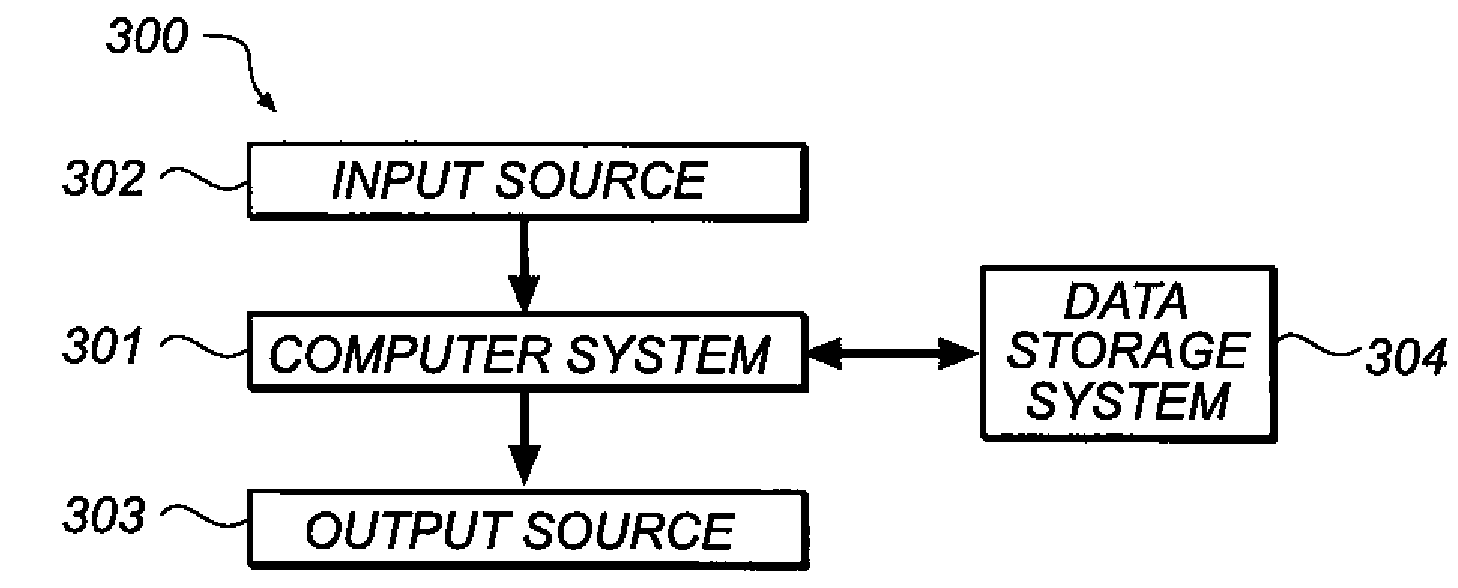Techniques for predicting colorimetric measurements of mixed subtractive colors
a subtractive color and colorimetric technology, applied in the field of color imaging, can solve the problems of not being able to perform a more valid prediction, and not being able to accurately predict the color output of overlapping similar transparent colors. to achieve the effect of removing the calorimetric effect of the paper bas
- Summary
- Abstract
- Description
- Claims
- Application Information
AI Technical Summary
Benefits of technology
Problems solved by technology
Method used
Image
Examples
Embodiment Construction
[0022]According to various embodiments of the present invention, a simplified version of Kubelka-Monk in conjunction with a non-continuous version of Bier's law for converting device independent data into device dependent data, such as RGB data, are used to provide a reasonable estimate for measured device independent data, such as CIELAB or CIEXYZ values, of mixed colorants on a substrate. According to embodiments of this invention, a reasonable baseline of original information is assumed, such as the information one normally finds in an ICC profile, combined with measurements that indicate shifts from the baseline, such as a change in paper color.
[0023]For those situations where there is no baseline information indicating the overprinting of different colors, such as for example a list of L*a*b* values for spot colors, the described techniques at least can provide a reasonably valid estimate for the mixing of solid colors, far better than current results in drawing applications.
[0...
PUM
| Property | Measurement | Unit |
|---|---|---|
| transmittance | aaaaa | aaaaa |
| thickness | aaaaa | aaaaa |
| colors | aaaaa | aaaaa |
Abstract
Description
Claims
Application Information
 Login to View More
Login to View More - R&D
- Intellectual Property
- Life Sciences
- Materials
- Tech Scout
- Unparalleled Data Quality
- Higher Quality Content
- 60% Fewer Hallucinations
Browse by: Latest US Patents, China's latest patents, Technical Efficacy Thesaurus, Application Domain, Technology Topic, Popular Technical Reports.
© 2025 PatSnap. All rights reserved.Legal|Privacy policy|Modern Slavery Act Transparency Statement|Sitemap|About US| Contact US: help@patsnap.com



